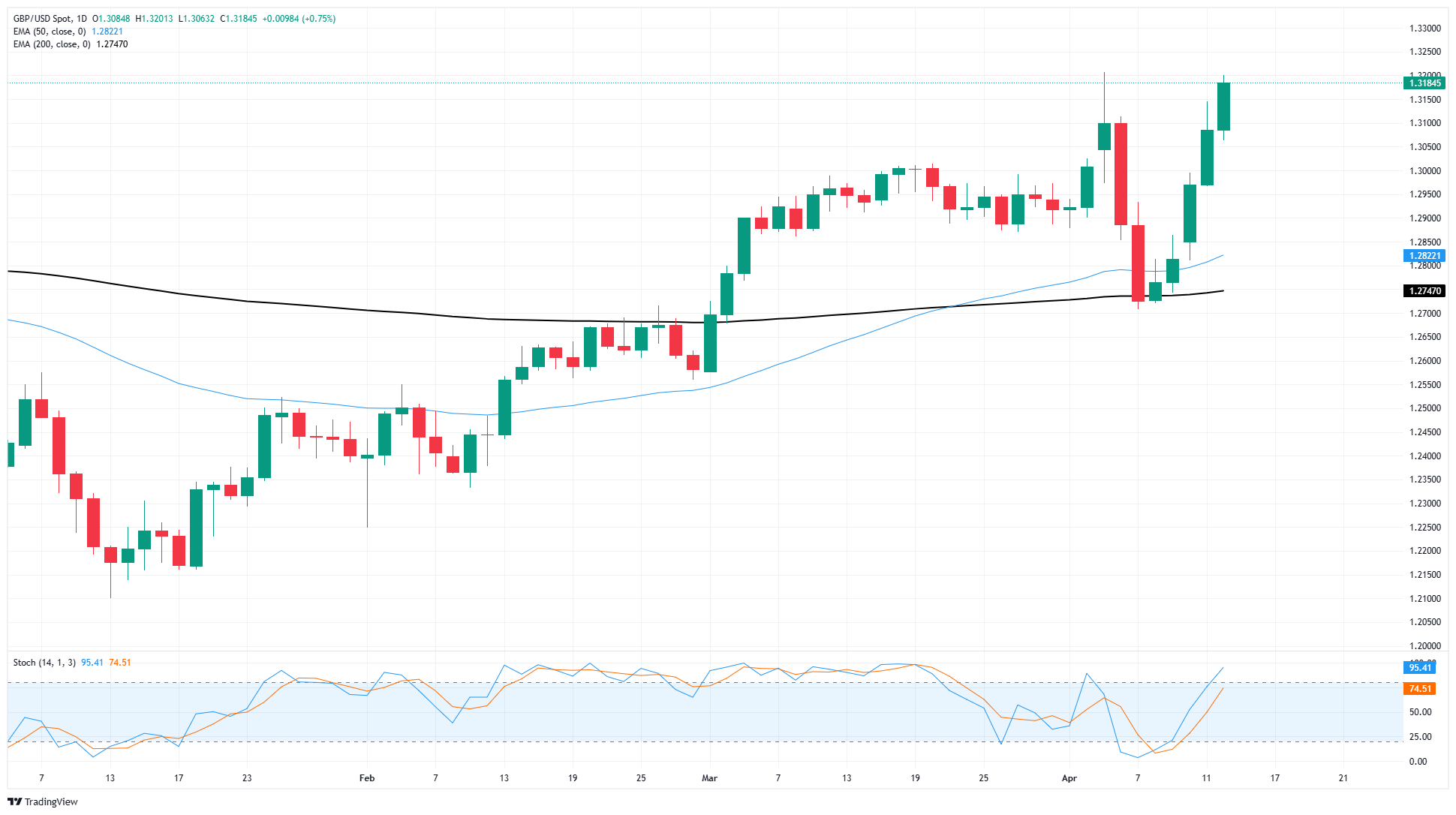- GBP/USD rose another 0.75% on Monday, climbing for a week straight.
- The Sterling’s broad recovery against the Greenback is poised to run up against key UK data this week.
- UK labor figures are due on Tuesday, followed by UK CPI inflation data on Wednesday.
GBP/USD rose three-quarters of one percent on Monday, climbing for a fifth straight trading session as the Pound Sterling continues to reclaim ground against the softening Greenback. Despite the GBP’s firm run up the charts against the USD, challenges still lie ahead with key UK economic data on the release docket for this week.
UK labor data will be posted early during the Tuesday London market session. The ILO Unemployment Rate for the 3 months ended in February is expected to hold steady at 4.4%, and the Claimant Count Change for March is forecast to ease to 30.3K from February’s 44.2K.
UK Consumer Price Index (CPI) inflation figures will be posted on Wednesday. Headline UK CPI inflation is forecast to tick down to 2.7% YoY from the previous period’s 2.8%, while core CPI inflation is expected to remain stubbornly pinned at 3.5% YoY.
GBP/USD price forecast
GBP/USD is testing multi-month highs near the 1.3200 handle after rising for a week straight. Cable has risen 3.88% bottom-to-top after the last swing low into the 200-day Exponential Moving Average (EMA) near 1.2700.
GBP/USD daily chart

Pound Sterling FAQs
The Pound Sterling (GBP) is the oldest currency in the world (886 AD) and the official currency of the United Kingdom. It is the fourth most traded unit for foreign exchange (FX) in the world, accounting for 12% of all transactions, averaging $630 billion a day, according to 2022 data.
Its key trading pairs are GBP/USD, also known as ‘Cable’, which accounts for 11% of FX, GBP/JPY, or the ‘Dragon’ as it is known by traders (3%), and EUR/GBP (2%). The Pound Sterling is issued by the Bank of England (BoE).
The single most important factor influencing the value of the Pound Sterling is monetary policy decided by the Bank of England. The BoE bases its decisions on whether it has achieved its primary goal of “price stability” – a steady inflation rate of around 2%. Its primary tool for achieving this is the adjustment of interest rates.
When inflation is too high, the BoE will try to rein it in by raising interest rates, making it more expensive for people and businesses to access credit. This is generally positive for GBP, as higher interest rates make the UK a more attractive place for global investors to park their money.
When inflation falls too low it is a sign economic growth is slowing. In this scenario, the BoE will consider lowering interest rates to cheapen credit so businesses will borrow more to invest in growth-generating projects.
Data releases gauge the health of the economy and can impact the value of the Pound Sterling. Indicators such as GDP, Manufacturing and Services PMIs, and employment can all influence the direction of the GBP.
A strong economy is good for Sterling. Not only does it attract more foreign investment but it may encourage the BoE to put up interest rates, which will directly strengthen GBP. Otherwise, if economic data is weak, the Pound Sterling is likely to fall.
Another significant data release for the Pound Sterling is the Trade Balance. This indicator measures the difference between what a country earns from its exports and what it spends on imports over a given period.
If a country produces highly sought-after exports, its currency will benefit purely from the extra demand created from foreign buyers seeking to purchase these goods. Therefore, a positive net Trade Balance strengthens a currency and vice versa for a negative balance.

